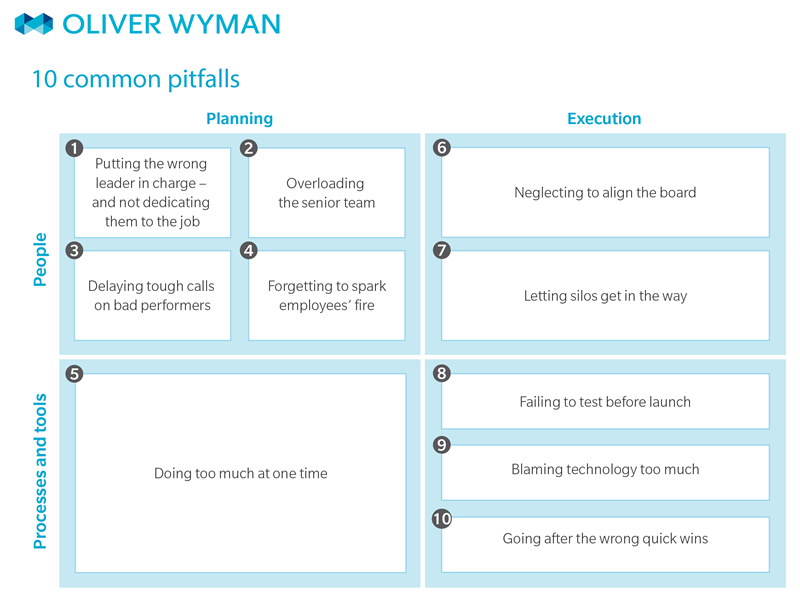While some emerging market banks have evolved and adapted to these new realities, plenty of others have not. As many face negative annual profit growth rates, they’re embarking on transformation projects to help them stay afloat—and hopefully sail ahead—in the industry’s increasingly choppy waters. A risk of failure is nearly inevitable, after all, at a time when companies are trying to do so much: these wide-ranging, all-consuming projects often mean doing everything from upgrading technology platforms to re-engineering branch network, operating models and sales channels all at the same time. Transformation projects are once-in-a-generation, bet-the-bank moments that are defined by their truly ambitious goals.
We typically see banks launch these transformation projects amid one of three circumstances. One is that their operating model has run its course and growth begins to stall. Another is that an international expansion has failed. The last is that the bank has had a change in leadership at the top who in intends to chart a new course. Whatever the reason they’re begun, transformation projects typically fail not just because of their complexity, but because of common, seemingly small mistakes. They focus too much on planning and design rather than the challenges of execution. Finally, they zero in too much on what has worked at other banks—rather than on the universal missteps that all too many companies take.
This paper draws from 15 years of working on transformation projects at emerging market banks and is told through firsthand examples from the field .It also shares those hard-learned lessons, as well as strategies to avoid them.








